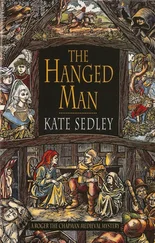Jon Bilbao - Still the Same Man
Здесь есть возможность читать онлайн «Jon Bilbao - Still the Same Man» весь текст электронной книги совершенно бесплатно (целиком полную версию без сокращений). В некоторых случаях можно слушать аудио, скачать через торрент в формате fb2 и присутствует краткое содержание. Год выпуска: 2016, Издательство: Hispabooks, Жанр: Современная проза, на английском языке. Описание произведения, (предисловие) а так же отзывы посетителей доступны на портале библиотеки ЛибКат.
- Название:Still the Same Man
- Автор:
- Издательство:Hispabooks
- Жанр:
- Год:2016
- ISBN:нет данных
- Рейтинг книги:4 / 5. Голосов: 1
-
Избранное:Добавить в избранное
- Отзывы:
-
Ваша оценка:
- 80
- 1
- 2
- 3
- 4
- 5
Still the Same Man: краткое содержание, описание и аннотация
Предлагаем к чтению аннотацию, описание, краткое содержание или предисловие (зависит от того, что написал сам автор книги «Still the Same Man»). Если вы не нашли необходимую информацию о книге — напишите в комментариях, мы постараемся отыскать её.
Jon Bilbao
Still the Same Man — читать онлайн бесплатно полную книгу (весь текст) целиком
Ниже представлен текст книги, разбитый по страницам. Система сохранения места последней прочитанной страницы, позволяет с удобством читать онлайн бесплатно книгу «Still the Same Man», без необходимости каждый раз заново искать на чём Вы остановились. Поставьте закладку, и сможете в любой момент перейти на страницу, на которой закончили чтение.
Интервал:
Закладка:
“Think about it,” he told them.
A few days later, the professor asked them if they’d thought about what he’d said. The first voices in favor piped up timidly. But many others soon jumped on the bandwagon, expressing their approval for the duodecimal system and chipping in with new reasons to support it. The professor listened with a satisfied smirk on his face. After a while, the room fell silent. All eyes were on him as the students waited to hear what he would say about the lively response his speech had inspired. But rather than adding anything, he burst out laughing, and his laugh reverberated through the room like the sound of stone scratching stone.
“You are bunch of idiots,” he told the students. “How could you possibly think that I consider the signs of the zodiac or the twelve moons of the year to be just reasons for changing our elegant numeral system?”
And he repeated.
“Idiots.”
Then he added, “And ignoramuses.”
By that point, he’d stopped laughing, and his face was puce.
“I fed you that load of nonsense merely to test your critical faculties. And I regret to confirm that you do not possess any such faculties. From this moment on,” he cautioned, pointing at them with a threatening finger, “it is your duty to question everything I say from this podium or write on this blackboard. Absolutely everything.”
Joanes didn’t miss a single day of the professor’s Numerical Analysis course. When he was with his friends, he joined in their harsh digs of him. But in his case, it was all an act. What he really felt for the professor was admiration.
This feeling was only amplified by the professor’s encyclopedic knowledge (encyclopedic from a student’s point of view), his assured, precise manner of teaching, his aristocratic indifference toward his students, and the frequent and prolonged silences into which he fell, sometimes mid-sentence, during which he would stare blankly into the distance, as if the students and everything in the room had vanished into thin air. Often, after one of these silences, he would scribble a few lines in the notebook that he kept in his breast pocket. Then he’d continue the class where he’d left off.
Joanes’s admiration of the professor was also fueled by the fame and recognition the man enjoyed in his field, and the impressive row of dog-eared books with his name on the spine that sat in the college library.
On numerous occasions, Joanes tried to get close to the professor, to gain his confidence, but the man’s distant character and the school’s educational model, which did not allow for contact between faculty and students, rendered any efforts useless. He took out a few of his books from the library and flicked through them fervently, but their contents were too advanced for him. He had to resign himself to simply admiring the beautiful, castle-like configurations of his equations.
All this changed when, in the middle of the course, the professor published a biography of the English mathematician Alan Turing. Turing had been one of the pioneers of computing and was greatly admired by the professor, who often cited him in class. His previous articles had been published in renowned journals in the field. However, his book about Turing, whose title was a pun— Turing: Pragmatic Mathematics —was published by a little-known house specialized in texts on chess.
During the professor’s routine digressions on Alan Turing, Joanes sensed a level of admiration similar to that which he felt for his don, and on this basis, he thought that the book might hold clues to certain facets of the professor’s personality that he kept hidden from his students, information on his tastes and interests. The moment that Turing: Pragmatic Mathematics was published, he rushed straight out to buy it.
The book included absolutely no mention of Turing’s private life, focusing solely on his professional career. He ran through the most celebrated episodes of that career: the publication of his famous article, “On Computable Numbers,” in which Turing postulated the existence of a hypothetical machine — the “a-machine”—which, by applying a finite series of steps, would be capable of determining the veracity or falseness of any affirmation; the mathematician’s crucial role in World War II, helping to decipher the Germans’ cryptographic codes using the Enigma machine; and his subsequent, failed attempts to bring the a-machine to life.
The last part of Turing: Pragmatic Mathematics was somewhat nebulous. Regarding Turing’s death, at the tender age of forty-one, the professor made only a fleeting reference to the “lamentable circumstances” in which it had transpired. There then followed a series of reflections — more philosophical than mathematical — on Turing’s lasting influence on mathematics and computer science.
Joanes’s efforts to get to the bottom of the professor’s character had been mostly in vain. The professor clearly admired Turing, but everybody knew that. His enthusiasm was clear from the book’s rambling writing style, light years away from the strict precision of the language he used in class and demanded of his students. Joanes wasn’t the least surprised that the hagiography that was Turing: Pragmatic Mathematics had been published by a minor press. He saw it as a personal whim, a way for the professor to let his hair down, almost like when scientists publish science fiction under pseudonyms.
Given how few conclusions about the professor he’d been able to arrive at by reading what was written in Turing: Pragmatic Mathematics , Joanes decided to look for some in the things he hadn’t written. In order to do so, he got ahold of another Turing biography, one that was more comprehensive and not so blatantly partial. He discovered that Turing was an eccentric, known for holding up his pants with a rope instead of a belt and for chaining his teacup to a radiator each night. These behaviors, coupled with his private nature and scant social skills, kept him outside the relevant mathematics circles, where he was looked upon with disdain or, at best, with paternalistic tolerance.
What’s more, he was homosexual, and in mid-twentieth-century England, this wasn’t to the benefit of anyone’s professional career.
In 1952, Turing began a relationship with a young man from Manchester. He was called Arnold Murray, and he was nineteen. Murray’s incessant requests for money drove them to a violent argument. A few days later, Murray broke into Turing’s house. Turing called the police. The subsequent investigation exposed the kind of relationship the mathematician and the young man shared. In accordance with Section 11 of the Criminal Law Amendment Act of 1885, Turing was accused of gross indecency.
To avoid serving jail time, he agreed to undergo a treatment that would “cure him of his illness.” The estrogen injections administered to him as a form of chemical castration had side effects. Turing gained weight and developed breasts.
On the morning of July 8, 1954, Turing’s housemaid came across his dead body. He was in bed, and beside him was an apple with several bites taken out of it. A post-mortem examination revealed that the fruit had been laced with cyanide.
From the moment of its first release, Turing had been fascinated by the Disney movie Snow White and the Seven Dwarves. One of his little eccentricities was reciting the verse that the evil stepmother spoke as she poisoned the apple she’d later offer to Snow White:
Dip the apple in the brew.
Let the Sleeping Death seep through.
None of this was mentioned in Turing: Pragmatic Mathematics . Joanes had previously thought that the professor had simply gotten swept away in the writing of his book, but this new information changed everything. The professor had put himself through a stringent process of self-control in order to divert his focus away from what he considered to be the most reprehensible aspects of Turing’s life. Comparing the two texts, Joanes concluded that what most vexed the professor was the weakness of Turing’s character, the immature facets of his personality, which had proved so harmful to his work. His immaturity had impeded the pragmatism so admired by the professor, the pragmatism that had first driven Turing to tear through the tough, translucent membrane that separates theory and practice, to abandon the crystal palace of pure mathematics and begin frequenting the workshops where engineers got their hands dirty. And if this so maddened the professor, perhaps it was because he feared that he, too, suffered from the same kind of immaturity, that his private life was an obstacle in the way of his professional life.
Читать дальшеИнтервал:
Закладка:
Похожие книги на «Still the Same Man»
Представляем Вашему вниманию похожие книги на «Still the Same Man» списком для выбора. Мы отобрали схожую по названию и смыслу литературу в надежде предоставить читателям больше вариантов отыскать новые, интересные, ещё непрочитанные произведения.
Обсуждение, отзывы о книге «Still the Same Man» и просто собственные мнения читателей. Оставьте ваши комментарии, напишите, что Вы думаете о произведении, его смысле или главных героях. Укажите что конкретно понравилось, а что нет, и почему Вы так считаете.












